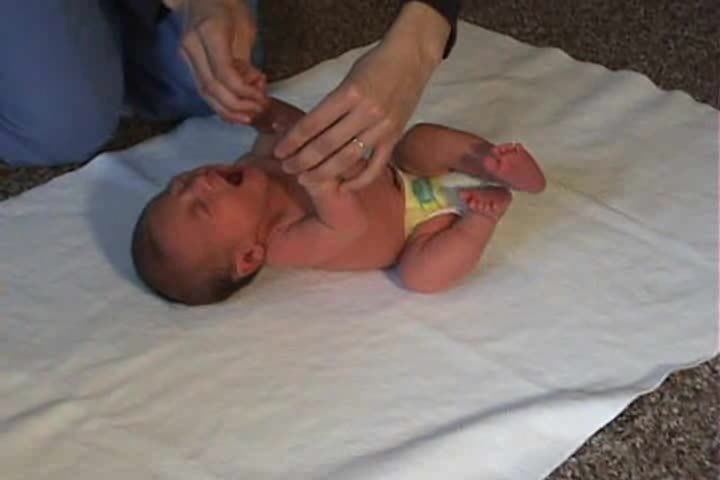 | ||
The Moro reflex is an infantile reflex normally present in all infants/newborns up to 3 or 4 months of age as a response to a sudden loss of support, when the infant feels as if it is falling. It involves three distinct components:
Contents
The primary significance of the Moro reflex is in evaluating integration of the central nervous system. It is distinct from the startle reflex, and is believed to be the only unlearned fear in human newborns.
Interpretation
The Moro reflex may be observed in incomplete form in premature birth after the 28th week of gestation, and is usually present in complete form by week 34 (third trimester). Absence or asymmetry of either abduction or adduction is abnormal, as is persistence of the reflex in older infants, children and adults. Absence indicates a profound disorder of the motor system or a generalised disturbance of the central nervous system. An absent or inadequate Moro response on one side is found in infants with hemiplegia, brachial plexus palsy, or a fractured clavicle. Persistence of the Moro response beyond 4 or 5 months of age is noted only in infants with severe neurological defects. In individuals with cerebral palsy, persistence and exacerbation of this reflex is common.
History
The reflex was first described in western medicine by Austrian pediatrician Ernst Moro (1874–1951).
Function
The Moro reflex may have developed in human evolution to help the infant cling to their mother while she carried them around all day. If the infant lost their balance, the reflex caused the infant to embrace their mother and regain their hold on the mother’s body.
